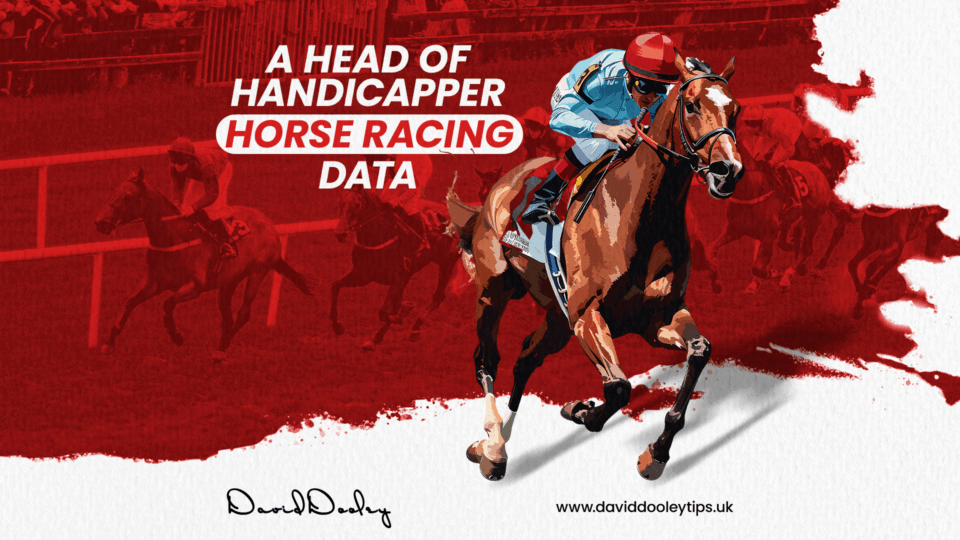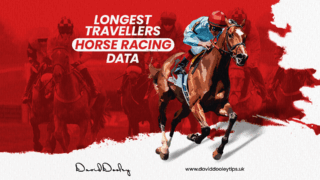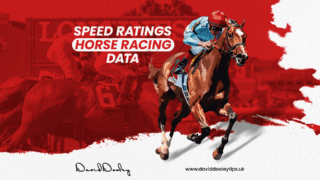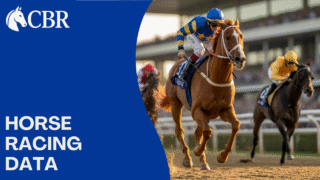Ahead Of Handicapper horse racing data identifies horses whose official ratings lag behind their true potential. This means you can spot value bets before the wider market adjusts, which often results in better odds and smarter wagers. Understanding how to recognise these horses allows you to capitalise on opportunities that typical form figures might miss.
You gain an edge by analysing runs where a horse finishes strongly or shows untapped ability despite a modest result. Trainers often plan multiple runs strategically, so recognising these patterns helps you predict when a horse will outperform its rating. Therefore, following the movements and intentions behind each race is essential for spotting these advantageous situations.
Using detailed race replays, sectionals, and trainer trends uncovers horses still racing off outdated marks. Because official ratings take time to catch up, you can exploit this delay by acting early. You will learn practical ways to detect these opportunities and apply them with confidence to your betting approach.
Contents
- 1 What Does ‘Ahead Of Handicapper’ Mean In Horse Racing?
- 2 How Is Ahead Of Handicapper Horse Racing Data Used?
- 3 Which Sources Provide The Most Reliable Handicapper Data?
- 4 How Do Odds And Starting Prices Reflect Handicapper Data?
- 5 What Criteria And Strategies Can Maximise Success?
- 6 How Can Punters Stay Ahead Using Handicapping Data?
What Does ‘Ahead Of Handicapper’ Mean In Horse Racing?
Being “Ahead Of The Handicapper” means a horse is running under a weight and rating that does not fully reflect its current ability. This usually occurs when a horse’s recent improvement is not yet accounted for in its official handicap rating. The concept involves understanding the handicapper‘s role, recognising well-handicapped horses, and knowing how this status can influence race outcomes.
Role Of The Handicapper
The handicapper assigns weights to horses based on their past performance to balance the chances across all runners. This weight system, known as the handicap, aims to create competitive races by requiring better horses to carry more weight.
When a horse wins, its official rating often increases, meaning it should carry extra weight next time. However, there is a delay before this adjustment takes effect. During this period, the horse remains on its old rating, carrying less weight than its current ability suggests. This is the key reason a horse becomes “ahead of the handicapper.”
The handicapper’s role includes reviewing race results and adjusting weights periodically. But between assessments, some horses may be lightly weighted compared to their proven form. If a horse runs again quickly after a win, it can create a betting opportunity due to this lag in ratings.
Identifying Well-Handicapped Horses
You spot a well-handicapped horse by comparing its current official rating with its recent performances. If a horse has won off a lower mark but is running soon again at that same mark, it is likely ahead of the handicapper. Such horses carry a penalty weight only temporarily, making their present handicap rating less demanding.
Other indicators involve form improvement patterns, such as horses that have recently undergone positive changes:
- Improvement with age or training
- Successful use of new equipment like blinkers
- Benefiting from surgery to enhance breathing or fitness
These factors suggest the horse’s real ability exceeds what the handicap rating shows. Runners fitting these criteria often attract market support, causing their odds to shorten.
Impact On Race Outcomes
When a horse is ahead of the handicapper, it may perform better than expected because it carries less weight relative to its ability. This advantage often translates into improved chances of winning or placing highly in a race.
However, not all horses handle coming back quickly after a win, so performance can vary depending on fitness and recovery. Trainers sometimes deliberately enter horses rapidly to exploit this weight advantage. Consequently, betting sites and tipsters closely follow these runners, as they present potential value.
Recognising horses ahead of the handicapper helps you make informed decisions by identifying when a horse is running on favourable terms. This knowledge can enhance your strategies when selecting bets in handicap races.
How Is Ahead Of Handicapper Horse Racing Data Used?
Ahead of handicapper horse racing data is applied by analysing a horse’s performance and current rating to identify value before official adjustments. You focus on interpreting form and ratings to detect underappreciated potential. You also examine essential statistics to see where the market may have missed clues. Finally, you apply this insight directly to racecards to make informed selections with an edge.
Form And Ratings Interpretation
You start by comparing a horse’s recent form against its official rating. If a horse finishes a race with energy left or performs well despite poor race conditions, it may be “ahead” of its assigned rating. This mismatch happens because official handicappers adjust ratings after races, causing a lag you can exploit.
A horse running consistently well but racing off a lower mark suggests it is improperly rated. This means the market may undervalue its current chance. You also assess trainer patterns and how recent runs fit a longer-term plan, which helps clarify whether form indicates improvement or a fluke.
Key Racing Statistics
You use specific statistics to quantify how much a horse is ahead of the handicapper. Important metrics include:
- Sectional times: Faster closing speed hints at untapped strength.
- Weight carried: Comparing performance under varying weights reveals true ability.
- Class of race: Consistent placed finishes in higher-class races indicate potential beyond the rating.
These statistics highlight areas where the official rating undervalues performance. You monitor these to spot horses whose real talent hasn’t been fully recognised yet.
Practical Racecard Analysis
When analysing racecards, you apply your understanding of form, ratings, and statistics to assess each horse’s value. Look closely for horses still racing at a lower handicap mark after recent strong performances. Prioritise those with patterns of improving times or signs of better conditions ahead.
You consider the context of the race: distance, going, and competition strength all impact whether a horse can capitalise on being ahead of the handicap. This combined reading helps you make more accurate selections before the market adjusts, giving you advantageous betting opportunities.
Which Sources Provide The Most Reliable Handicapper Data?
Reliable handicapper data comes from official bodies, independent services, and established media outlets. Each source offers unique strengths that influence how accurately you can assess horses ahead of the handicapper. Understanding these differences helps you decide where to focus your attention for consistent, data-driven insights.
Official Ratings Systems
Official ratings systems are the primary source for accurate handicap ratings because they are maintained by governing organisations like the British Horseracing Authority. These ratings are updated weekly and reflect a horse’s recent performances, which means you receive verified, up-to-date figures based on race results.
Because they are used to set race weights, official ratings provide a direct measure of a horse’s perceived ability. You can often search or export these ratings by horse, trainer, or jockey, allowing you to track form efficiently. However, official ratings may lag behind real changes in form, so you need to combine them with additional insights for early detection of horses ahead of the handicapper.
Independent Ratings Services
Independent ratings services provide alternative handicap data by applying proprietary algorithms and statistical models. These services often use more dynamic methods like speed ratings, market movements, and race conditions to predict when a horse’s official rating might underestimate its true ability.
Such sites offer advantages because they adjust faster than official figures, helping you spot value bets before the wider market adjusts. They also tend to include contextual information about trainers’ recent form and jockey performances, which improves the depth of analysis. However, reliability depends on the quality of each service’s data inputs and model, so cross-referencing with official ratings is advised.
Trusted Media Outlets
Trusted media outlets like the Racing Post combine official data with expert opinion and market trends. Their coverage typically includes detailed form guides, comments from trainers and jockeys, and betting market analysis, making their handicap-related content richer and more actionable.
These sites deliver insights on horses running ahead of handicapper ratings by highlighting emerging form patterns and market support. While they may not update raw ratings themselves, their synthesis of data and expert commentary provides useful perspective that raw statistics can miss. Relying on such outlets helps you filter the most relevant information from large data sets.
How Do Odds And Starting Prices Reflect Handicapper Data?
Odds and starting prices give you clues about how the handicapper’s rating influences the market. They reflect adjustments based on recent form, trainer plans, and public money but may lag behind real ability changes. Understanding the nuances between Betfair SP and industry SP, as well as fluctuations caused by penalties, will help you interpret value better.
Understanding Betfair SP And Industry SP
Betfair SP is calculated using the exchange prices at the race’s start, reflecting the collective opinion of users placing bets against each other. It often reacts faster to shifts in form or insider sentiment because it is market-driven and not controlled by bookmakers.
Industry SP is the official starting price determined by bookmakers. It typically reflects a consensus of bookmaker odds just before the race and adjusts for liability and broader market factors. This means it can be slower to respond to horses ahead of their handicap mark since bookmakers manage their exposure carefully.
For you, recognising that Betfair SP might show discrepancies earlier than industry SP can guide when to place value bets. Betfair SP’s responsiveness often gives better insight into market expectations around a horse’s true ability as it changes ahead of official handicap adjustments.
Odds Fluctuations And Penalties
Odds fluctuate in reaction to both public money and official handicapper updates. When a horse wins, the handicapper usually raises its rating, causing odds to shorten. However, there is often a delay before this re-rating appears in official markets.
During this lag, you might spot a “window of opportunity” where odds remain longer than they should, especially if the horse runs under a lower rating soon after a win. Penalties imposed by the handicapper, such as weight increases, also impact odds by making a horse less attractive. Market odds adjust as bettors react to these penalties.
Understanding these dynamics lets you identify when odds might undervalue a horse, signalling potential value bets before the market absorbs handicapper changes fully. Being alert to odds movements tied to penalties helps you stay ahead of less informed bettors.
What Criteria And Strategies Can Maximise Success?
Maximising success relies on selecting horses that are genuinely ahead of the handicapper, considering the influence of jockeys and trainers, and thoroughly assessing recent runner performance. Each factor improves your ability to identify value bets and avoid misleading ratings or unsuitable race conditions.
Effective Filtering Methods
You should first apply filters based on race conditions and official ratings to find horses that carry less weight relative to their recent wins. Focus on runners that have won decisively yet are racing quickly again before their handicap mark is officially adjusted.
Look for horses running under a temporary penalty weight following a win. This means they may be “well in” to the handicap, giving you an edge because the official rating lags behind their actual ability.
Additionally, consider age, recent form patterns, and course suitability to narrow down horses with improvement potential. Filtering out runners in unfamiliar conditions or those with inconsistent performances will help you focus on well-treated candidates.
Jockey And Trainer Influence
A skilled jockey and an in-form trainer often contribute significantly to a horse’s chances. Trainers who strategically place horses in races where they are ahead of the handicapper can optimise their winning probability.
Top trainers frequently run horses quickly after a win to exploit lower handicap weight before ratings increase. Identifying such trainers and watching their entries can give you an advantage.
Similarly, a jockey who understands the horse’s style and race tactics will enhance performance. Pay attention to jockeys with strong recent results on a particular horse or at specific courses, as their input can translate into a better chance of success.
Assessing Runner Performance
Evaluating how a horse has performed recently is essential. You should prioritise horses showing consistent improvement or recent big-margin wins because their current form is likely under-represented in the handicap rating.
Check whether the horse has successfully competed at the same distance, track surface, and conditions, as this often affects whether the “ahead of handicapper” status will translate into a strong run.
Also, review any changes such as new equipment (blinkers or headgear) or physical improvements like wind surgery or being gelded, as these can raise a horse’s performance beyond official ratings. These factors often indicate untapped potential that hasn’t yet impacted the official handicap.
By combining these performance insights with handicap data, you increase the chance of spotting horses that offer solid value in betting markets.
How Can Punters Stay Ahead Using Handicapping Data?
To stay ahead in horse racing, you must combine up-to-date form analysis, relevant historical data, and continual improvement using specialised tools. Applying these elements together helps you identify undervalued horses before their official ratings catch up and exploit market inefficiencies effectively.
Harnessing Recent Form Trends
Analysing recent form is crucial because it reveals current horse performance that handicappers may not have fully accounted for. Focus on sectional timings and finishing pace, as improvements here often precede rating upgrades. When you spot a horse showing consistent speed gains over the final furlongs, it indicates potential to outrun official marks.
Also, consider race context such as track conditions and opposition quality, since these affect performance and value. Horses overcoming poor tactical positions or running strong closing speeds signal hidden improvements. By tracking these recent form trends daily, you can place bets before market odds shorten due to official rating adjustments.
Utilising Historical Data
Studying historical racing data allows you to understand patterns of progression and regression that ratings alone don’t capture. For example, lightly raced horses and three-year-old improvers often outperform their published handicaps before adjustments occur. Past results over similar distances or going conditions give insights into true ability beyond current marks.
You should cross-reference historical statistics with current form to confirm trends. This dual approach helps distinguish between genuine improvement and one-off performances. Historical data also highlights horses receiving minimal penalties despite strong runs, which can present valuable betting opportunities before handicappers respond.
Continuous Learning And Tools
To maintain an edge, you need to evolve by using advanced data analysis tools and by deepening your knowledge of rating systems. Machine learning models and detailed race metrics help you process vast amounts of racing data, identifying horses likely to move ahead of their handicap marks faster than traditional handicappers.
Regularly updating your understanding of handicapping principles and new performance indicators sharpens your judgement. Utilising software with predictive analytics or subscribing to reliable racing data sites supports disciplined monitoring of races and timely betting decisions. This ongoing learning ensures you react quickly to emerging form patterns unlike casual punters.




